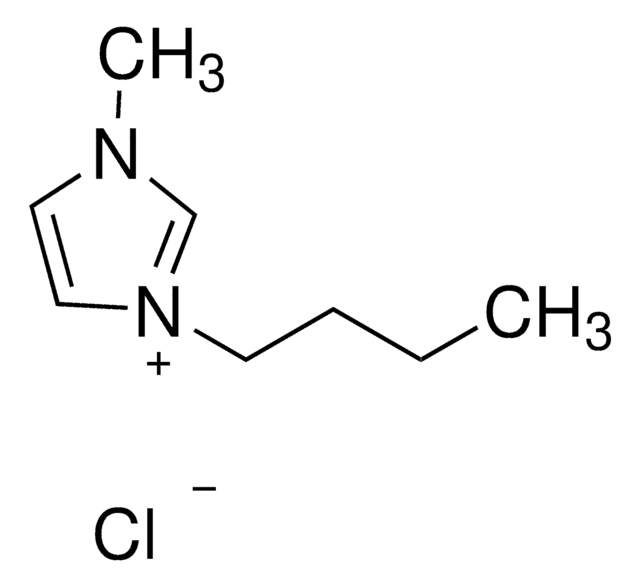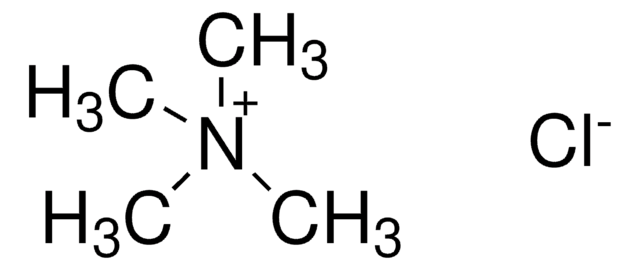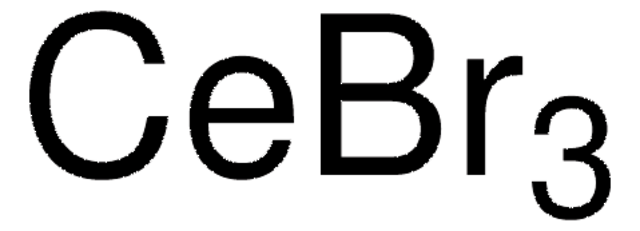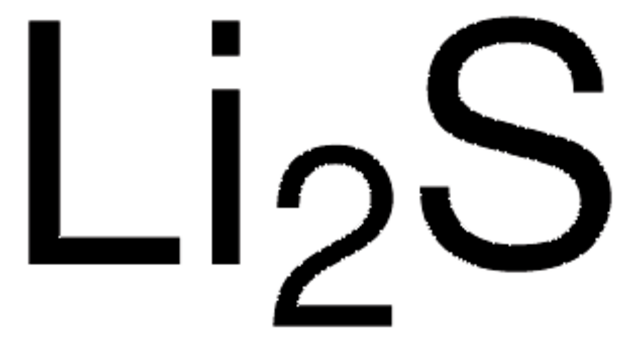429465
Bromure de lithium
AnhydroBeads™, −10 mesh, 99.999% trace metals basis
Synonyme(s) :
Lithium monobromide
About This Item
Produits recommandés
Qualité
for synthesis
synthesis grade
Niveau de qualité
Gamme de produits
AnhydroBeads™
Essai
99.999% trace metals basis
Forme
beads
Impuretés
≤15.0 ppm Trace Metal Analysis
Taille des particules
−10 mesh
Pf
550 °C (lit.)
Chaîne SMILES
[Li+].[Br-]
InChI
1S/BrH.Li/h1H;/q;+1/p-1
Clé InChI
AMXOYNBUYSYVKV-UHFFFAOYSA-M
Vous recherchez des produits similaires ? Visite Guide de comparaison des produits
Catégories apparentées
Description générale
Application
- An electrolyte additive for lithium-sulfur batteries to enhance their rate performance and cycling stability.
- To prepare poly (vinyl alcohol) (PVA) fibers. The addition of LiBr improves the mechanical properties of the polymer fibers.
- To fabricate a surface passivation layer for silicon solar cells to enhance photoluminescence intensity.
Informations légales
À utiliser avec
Mention d'avertissement
Warning
Mentions de danger
Conseils de prudence
Classification des risques
Acute Tox. 4 Oral - Eye Irrit. 2 - Skin Irrit. 2 - Skin Sens. 1
Code de la classe de stockage
13 - Non Combustible Solids
Classe de danger pour l'eau (WGK)
WGK 1
Point d'éclair (°F)
Not applicable
Point d'éclair (°C)
Not applicable
Faites votre choix parmi les versions les plus récentes :
Déjà en possession de ce produit ?
Retrouvez la documentation relative aux produits que vous avez récemment achetés dans la Bibliothèque de documents.
Les clients ont également consulté
Articles
Research and development of solid-state lithium fast-ion conductors is crucial because they can be potentially used as solid electrolytes in all-solid-state batteries, which may solve the safety and energy-density related issues of conventional lithium-ion batteries that use liquid (farmable organic) electrolytes.
Global Trade Item Number
| Référence | GTIN |
|---|---|
| 429465-5G | 4061833465769 |
| 429465-25G | 4061838139702 |
Notre équipe de scientifiques dispose d'une expérience dans tous les secteurs de la recherche, notamment en sciences de la vie, science des matériaux, synthèse chimique, chromatographie, analyse et dans de nombreux autres domaines..
Contacter notre Service technique









